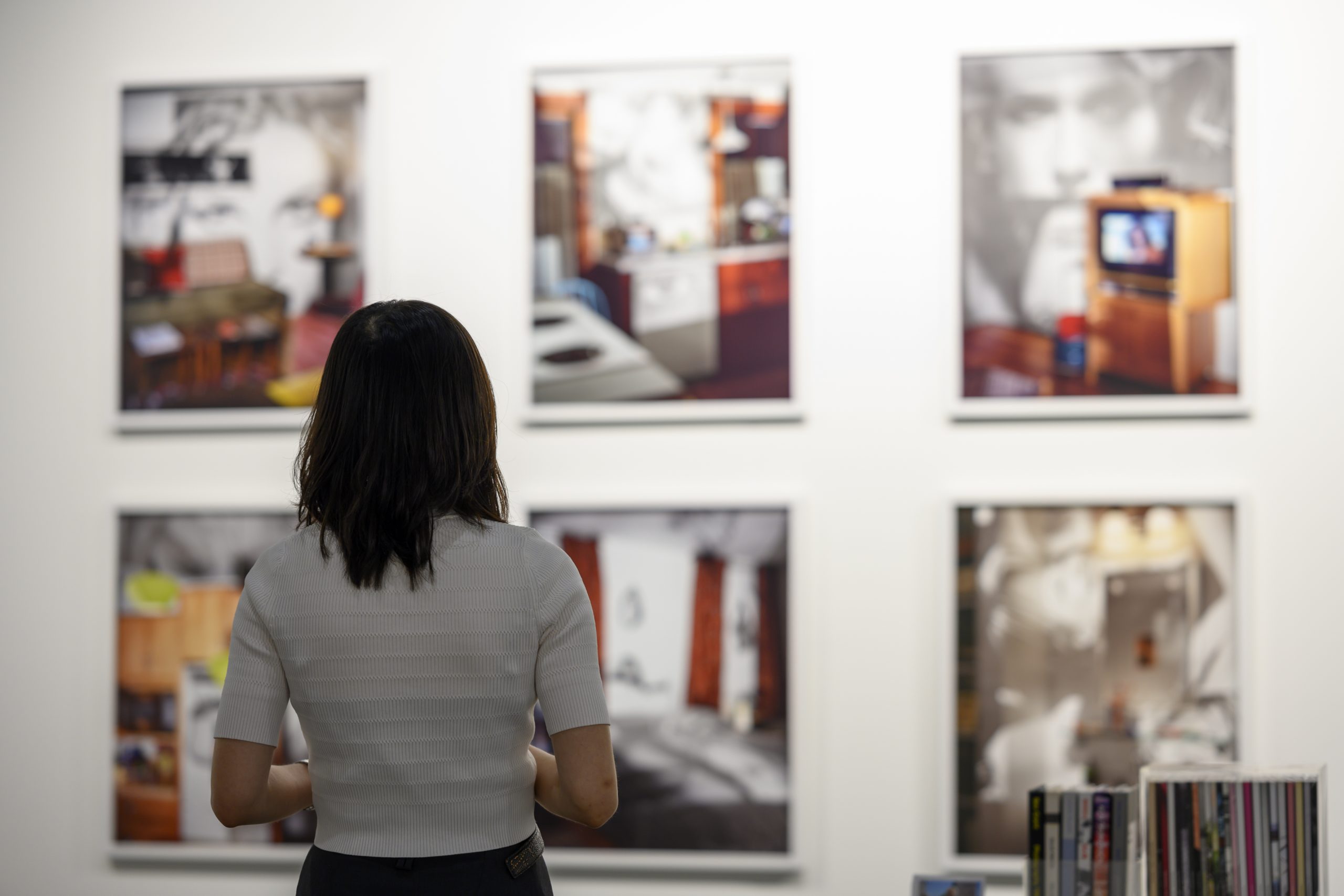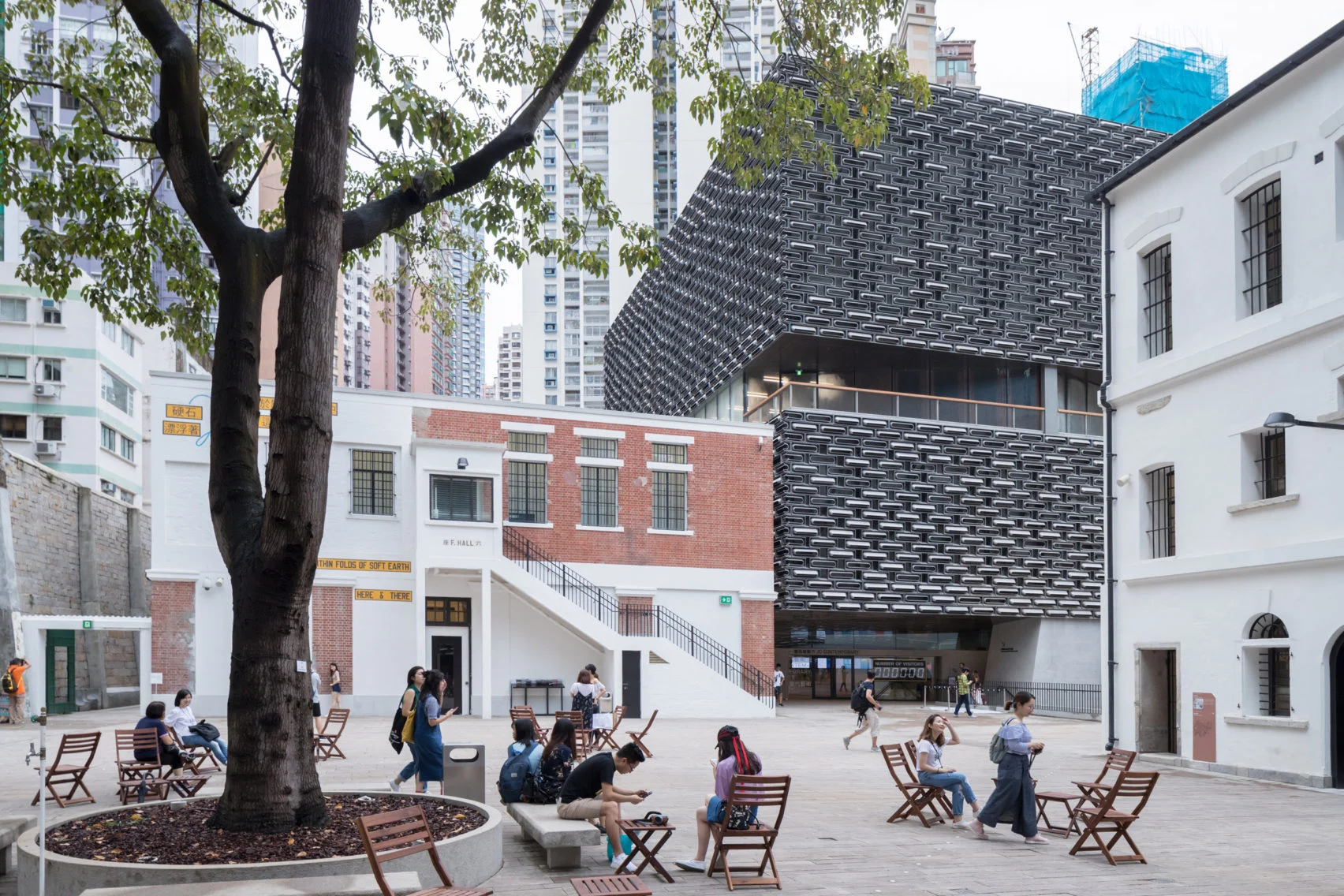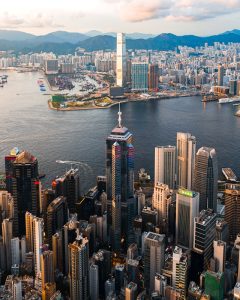Pi Li has been at the forefront of contemporary art initiatives in Asia and Hong Kong. After completing a PhD from Central Academy of Fine Arts in Beijing, Pi served as the deputy executive director of the art administration department at the university. In 2005, he co-founded Boers-Li Gallery in Beijing (now Spurs Gallery). He then moved to Hong Kong, where he was the Sigg Senior Curator and Head of Curatorial Affairs at M+. Pi Li is now Head of Art at Tai Kwun, a leading arts and culture institution in Hong Kong.
In this interview, we speak to Pi Li about the rapid evolution of the art scene in Hong Kong in the past decade, important moments at Tai Kwun, and his views on the role of art institutions in stimulating the overall arts ecosystem.

The JC Contemporary building at Tai Kwun is designed by the acclaimed Swiss architectural firm Herzog & de Meuron. Courtesy of Tai Kwun
You have been a central part of the evolving arts ecosystem in China and Hong Kong. Looking back, how would you describe its evolution over the past decade?
I moved to Hong Kong twelve years ago in 2012, and have witnessed its art scene grow exponentially in this time. Beginning with the launch of Art Basel in Hong Kong, the openings of international blue chip gallery branches in Hong Kong, the opening of Tai Kwun in 2018, and M+, in just twelve years, Hong Kong has become a very, very important international art hub. I think that’s a very remarkable change, and looking back, I cannot even believe that so much can happen in just over a decade. Hong Kong has, no doubt, been very international, and, in fact, one cannot imagine any other place to build up this kind of cultural scene. That’s also because of Hong Kong’s unique position in Asia.
For me, the most important moment would be the opening of Tai Kwun Contemporary in Hong Kong. We opened a new page, and it was a moment that brought us to a new period with the rapid growth of cultural institutions in Hong Kong. It really showed that Hong Kong is not only a place for auctions, for art fairs, but is also a place that can offer important cultural programs, generate the public interest and build up dialogues in the art scene.
'Hong Kong has, no doubt, been very international, and, in fact, one cannot imagine any other place to build up this kind of cultural scene.'
You have spoken about the need for institutional diversity in Hong Kong, and your desire to bring in more international art to the city. Tai Kwun recently hosted a major show of Bruce Nauman. What do you think such shows do for the ecosystem and local arts community?
The current art scene in Hong Kong really began with the explosion of the art market [over the past decade, with galleries such as Pace opening in 2014, and Hauser & Wirth and David Zwirner opening in 2018]. Frankly, many programs happen first in fairs and commercial galleries, and it is arguable that, in Hong Kong, art comes filtered through the art market and commercial galleries. So, it’s really important for us [Tai Kwun], as an independent cultural institution in Hong Kong, to bring a greater diversity of programs to the region.
I want to mention our Bruce Nauman show this year. As many of you know, Bruce Nauman is the artist’s artist of our time. He opened up many possibilities of contemporary art since the 1960s, but was not an artist well known in our region — Hong Kong and Asia in general. So I’m very happy to have collaborated with the Pinault Collection and with my co-curators, Carlos Basualdo (Philadelphia Museum of Art) and Caroline Bourgeois (Pinault Collection) to bring this show to Tai Kwun, which I see as a salvation of Bruce Nauman, exploring his activity and creations around body, sound and language. It’s important for people to return to such origins of contemporary art to understand art today. So I think, as a cultural institution here, we introduce audiences to important moments, anchor artists and anchor works. And this benefits everyone and the whole scene.
How can institutions and other art initiatives, like fairs and the galleries, work together?
There are very fundamental differences between art institutions, which are not-for-profit institutions, and those that are commercial institutions. However, while understanding these differences, we can also see how together, museums, cultural centers, fairs and galleries can create a positive, active culture for the city and for the region. Initially, art fairs or galleries can introduce new artists here. They really trigger the curiosity of people. It’s also important for art institutions to not only follow this curiosity, but also provide in-depth understandings for anchor artists and for important anchor moments in contemporary art, and create solid participation and engagement programs. Art institutions can also offer important artists who are less well-received by the market.
You have spoken previously about the importance of moments like Art Week in bringing audiences to Hong Kong. What are you excited about for Art Week in 2025? What is planned by Tai Kwun for Art Week 2025?
Art week in Hong Kong is a very compressed week, not only for art fairs, but for all the art institutions that open new programs for the international world, as well as for many artists, professionals and collectors. It is a time when we are gathered in Hong Kong, all together. So it’s quite an exciting moment for people to meet each other, exchange views and see a lot of new things.
As for Tai Kwun, and also for me, the most exciting part of the next art week is that we will present three female artists — Polish-German artist Alicja Kwade, Chinese artist Hu Xiaoyan and British artist Maeve Brennan — all solo shows open at the same time at Tai Kwun Contemporary. For us, that’s a very strong statement to show the greatest female artists of our time and provide an in-depth understanding of their creations.
'It’s also important for art institutions ... provide in-depth understandings for anchor artists and for important anchor moments in contemporary art...'
Can you give us some recommendations for your favorite artists working with photography or moving image today?
There are many great photographers and moving image artists working in this time, and several whom I find extremely interesting. One artist is Chinese artist Chen Ronghui, now based in Huangzhou. I saw one of his projects many years ago, talking about shrinking cities in the North of China, from where a lot of people have moved to the rapidly urbanising East and South of China. His photographs really documented the young people living in those abandoned cities in the North of China in the most remarkable way. I think artists like Wang Tuo represent moving image artists very well, as they develop the film-essay as their style.
PHOTOFAIRS Hong Kong will take place 26-30 March 2025 (VIP Preview March 25) at the Central Harbourfront.



